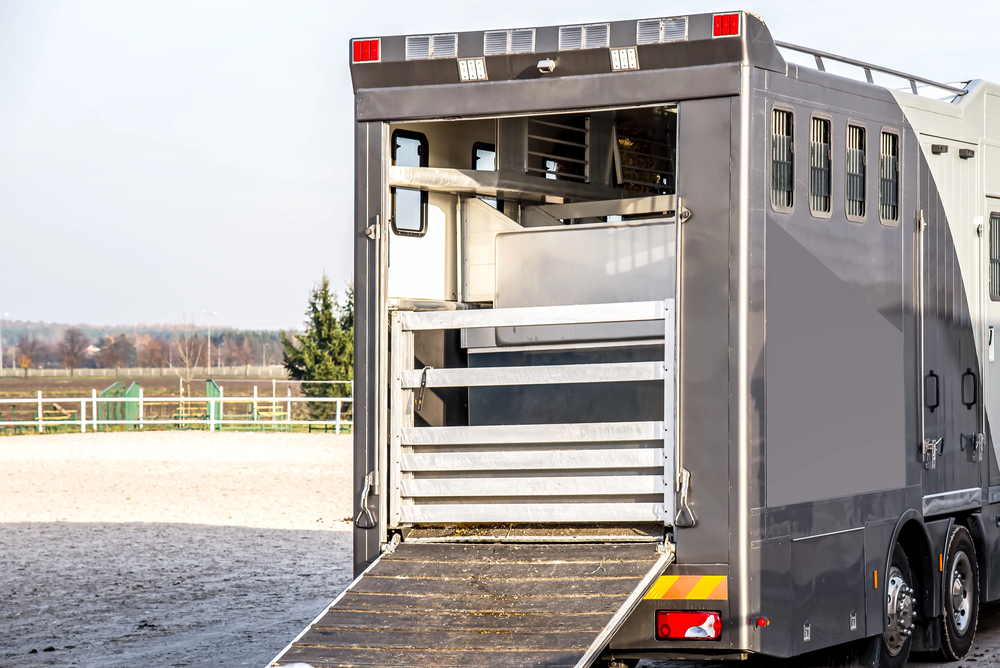Most horse transport companies base their pricing on a per-kilometer (or per-mile) rate. This base price can vary depending on location, fuel costs, vehicle type, and other logistical factors. However, this base rate is only part of the picture.
Let’s take a closer look at what influences the final price.
Key Factors That Affect Horse Transport Costs
1. Distance and Route
Unsurprisingly, the longer the journey, the higher the cost. Most companies charge by the kilometer or mile, and the rate may decrease slightly for longer trips due to economies of scale. However, not all routes are equal — rural or remote pickup/drop-off locations may require detours or additional time, increasing the total price.
Transporters also consider road conditions, border crossings, tolls, and fuel availability when planning a route.
2. Number of Horses
Transporting more than one horse can impact the price in two ways. If you’re booking a shared transport, the cost is typically divided among owners. If you’re requesting a private trip, the price reflects the full cost of the journey, regardless of how many horses are loaded.
Bringing more horses might offer better per-horse value, but it depends on the vehicle’s capacity and route.

3. Vehicle Type and Comfort Level
Not all transport vehicles are the same. A small two-horse trailer pulled by a pickup truck will cost less than a large air-conditioned horsebox with built-in monitoring and partitions. More premium options offer additional comfort, ventilation, insulation, and space, which is ideal for long distances or sensitive horses — but they also cost more.
If you’re transporting a valuable competition horse or a foal, paying a little extra for a higher-quality vehicle is often worth it.
4. Shared vs. Private Transport
Shared horse transport — where your horse travels alongside others — is generally more economical, especially for long trips. It’s also more flexible in terms of pricing. However, pickup and drop-off times may be less predictable since the route is planned around multiple locations.
Private transport offers more control, direct routes, and often faster delivery, but it comes at a higher price. This option is ideal for horses that don’t travel well with others, have strict schedules, or require special care.
5. Timing and Availability
Last-minute bookings are often more expensive, especially during busy seasons (e.g., competition season, spring/summer moves). Booking well in advance helps secure better prices and more scheduling flexibility.
Some transporters offer discounts for flexible pickup windows or off-peak times. Others may offer special rates if your route fits into a partially full trip they already have scheduled.
Additional Costs to Consider
There are a few extra charges that can appear on your invoice — some of which may not be immediately obvious if you’re comparing quotes:
Overnight stays: For very long trips, horses may rest overnight at stables or waypoints, adding to the cost.
Waiting fees: If pickup or delivery is delayed, some transporters charge for extended waiting time.
Border/customs fees: For international trips, there may be administrative fees or vet checks required at the border.
Tolls and fuel surcharges: Especially on longer or toll-heavy routes, these may be itemized separately.
Ask your transport company for a full breakdown in advance to avoid surprises.
How the HORSES.SALE Search Transport Companies Tool Makes Pricing Clear
With so many variables, getting a transparent and accurate quote can be a challenge — especially if you’re contacting multiple companies manually. That’s why we created the HORSES.SALE transport tool: to give you instant access to clear, distance-based pricing from verified transporters.
Here’s how it works:
Enter your origin and destination. Our form uses Google Maps autocomplete to make input easy and accurate.
Instant distance calculation. See the exact trip length between both locations.
View transporters and pricing. You’ll get a list of companies that operate in your region, complete with their base rate per km.
Compare and request. Choose to get a fast quote or send a more detailed transport request directly to the providers.
All the listed transporters on HORSES.SALE include contact details, operating areas, vehicle types, and transparent pricing models.
Tips for Getting the Best Value
Compare apples to apples. When reviewing quotes, be sure to compare transport types (shared vs. private), vehicle quality, and included services — not just price.
Book early. Last-minute requests often come with a premium.
Ask what’s included. Make sure your quote includes everything — distance, waiting time, tolls, etc.
Review transporter profiles. On HORSES.SALE, you can evaluate providers by their experience, contacts, and service details.
Conclusion: Clarity Means Confidence
Horse transportat compamies doesn’t have to be a financial mystery. By understanding what drives pricing and using tools that provide full visibility, you can confidently choose the best option for your horse and your budget.